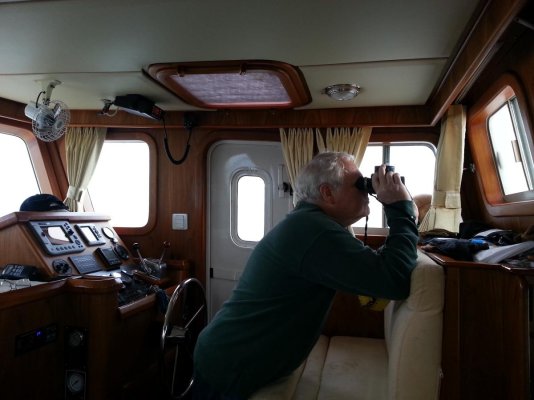ranger58sb
Guru
- Joined
- Aug 21, 2013
- Messages
- 7,328
- Location
- Annapolis
- Vessel Name
- Ranger
- Vessel Make
- 58' Sedan Bridge
Can you comment on % of power that respond to an VHF hail? Have had recurring issues with big sportfish on plane in canals which are speed posted who don’t respond.
Would you appreciate more boats having transceivers?
Last question first: absolutely. I just don't see it happening quickly, and I dunno that I'd ever expect more than 20% participation (a WAG) even way down the line... and assuming it's not made mandatory. (As is apparently the case in some places like Thailand, Singapore, Maylasia...)
Can't remember clearly about powerboat response, probably because they answered (or hailed me first) often enough so I didn't get irritated about it. I do remember clearly a couple instances where I hailed a sportfish behind us -- probably in full delivery mode, with bow wave higher than our transom
Come to think about it, I maybe only semi-remember a couple instances of being waked enough to be surprised by it.
In a sailboat there’s no issue looking behind you. Just turn your head. Find it’s different in power. We had two large rigid kayaks attached to the railing of the boat deck. Just got rid of them. Hopefully that will improve looking over at the aft quarters. Sail and trawlers are slow. I’m as interested in seeing what’s behind me as in front. Do make it a habit to get out of the comfy helm seat (best seat in the boat) and look around but I’m no saint. Already have had the experience of AIS and radar clueing me in it’s time to get up and look.
We've got really good visibility aft from our helm, but FWIW we do also use radar as a rear view mirror... a lot. More often our radar picture is about that, versus what's out in front or on sides. Not in place of Mark I* Eyeballs, but a good adjunct.
-Chris
Last edited:


